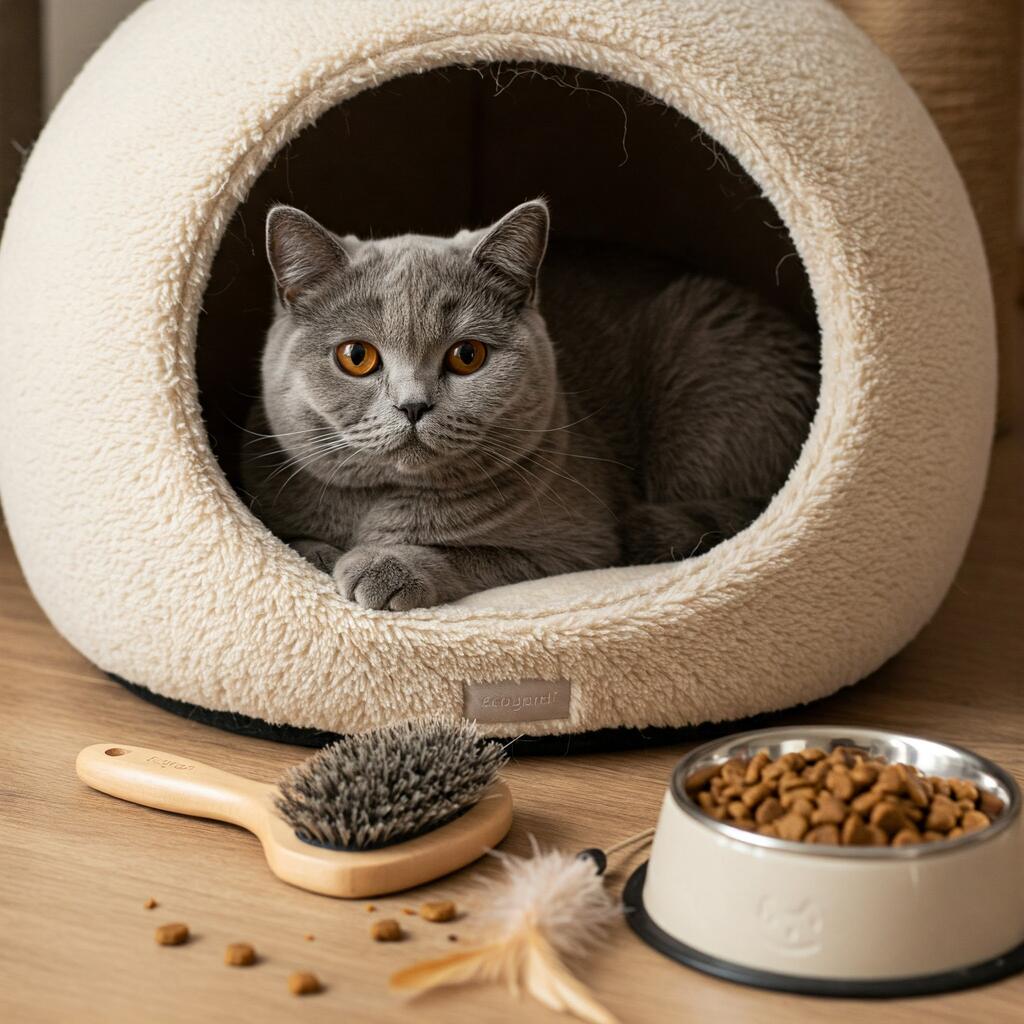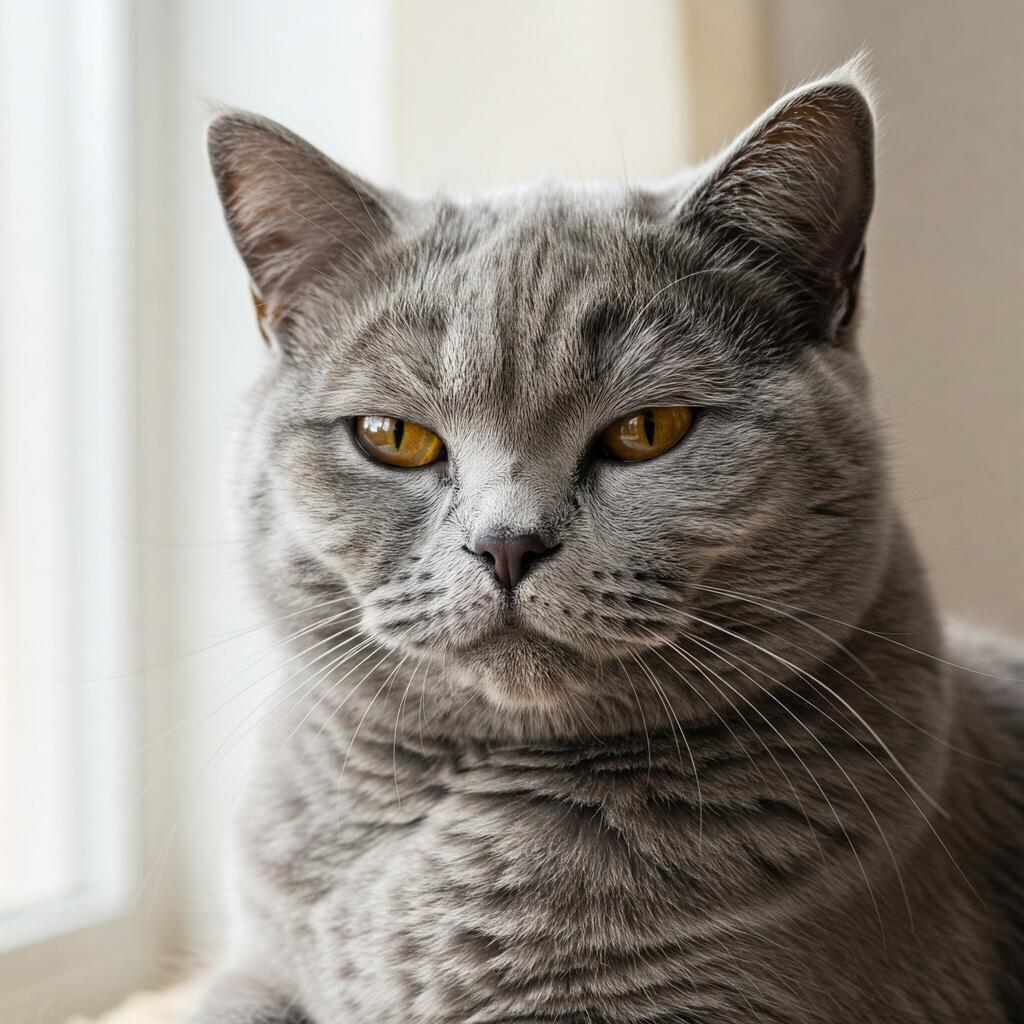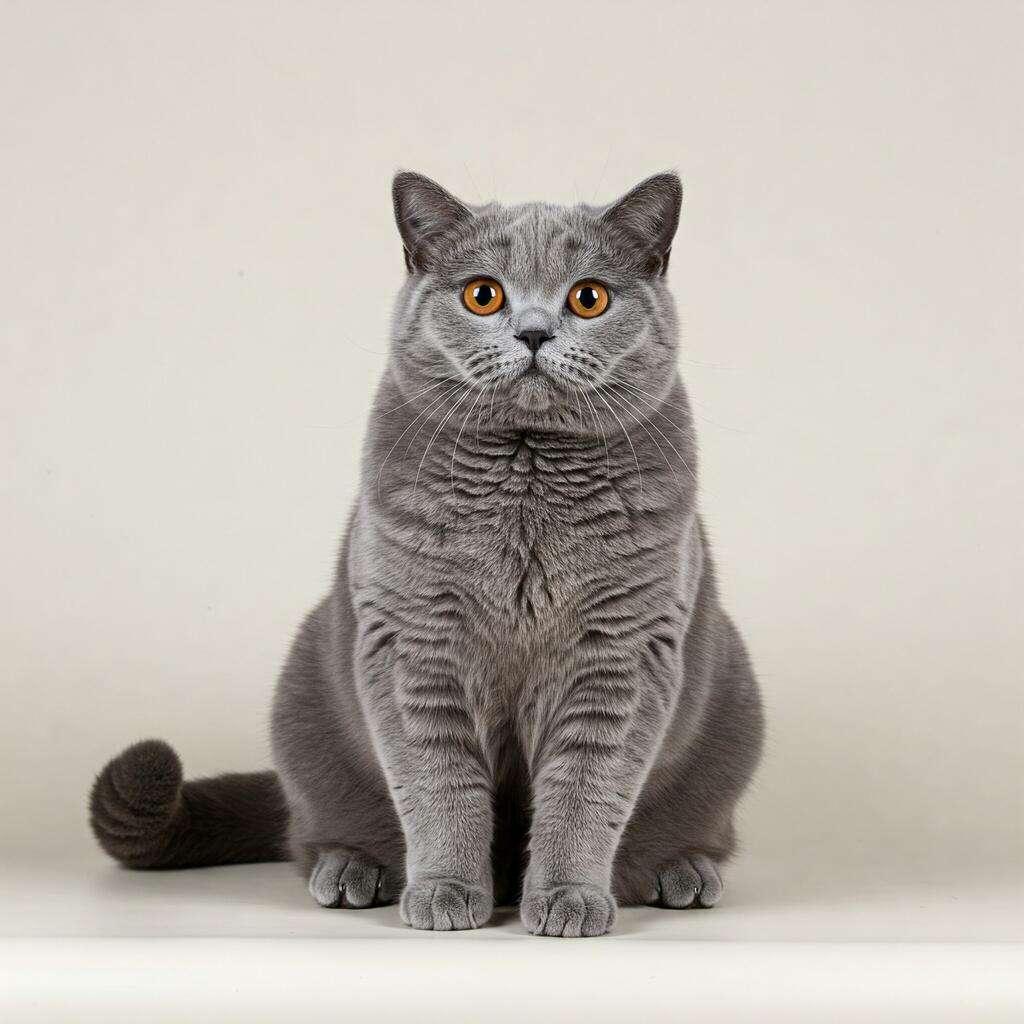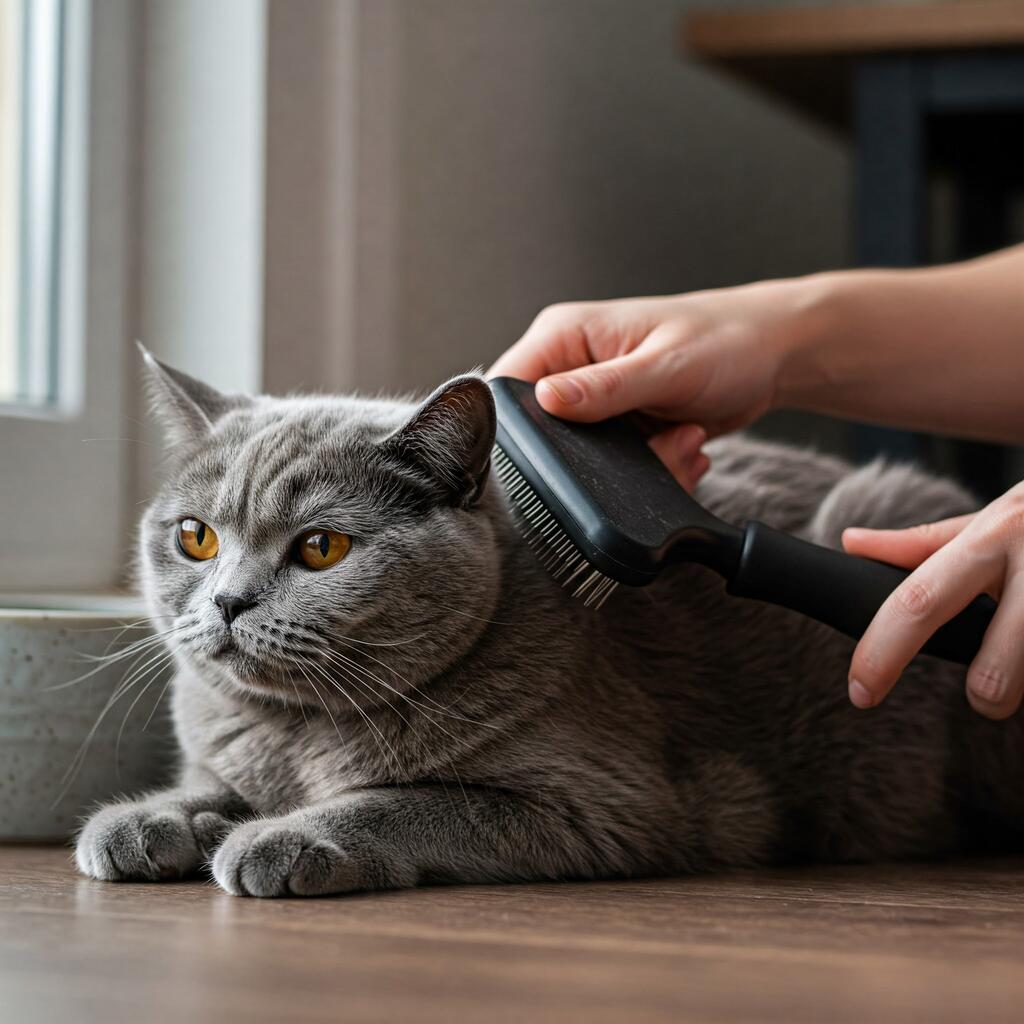
British Shorthair Cats: Complete Care Guide & Tips
The Cat British Shorthair is said to be the oldest cat in Britain, brought here by the Romans during invasions and crossed with native wildcats, thus creating a true breed. Later they were crossed with French Carthusians and Persians to make its coat softer and head rounder. But legend places its origin even further back; it is said to have come from ancient Egypt at the time of the Hebrews' flight from Egypt.
During the First and even more so the Second World War, this breed risked extinction, as did many other feline breeds, and it was after the Second World War that through various matings the British Shortair as it is now finally arrived. The breed was only recognised worldwide in 1977.
Character of the Cat British Shorthair

They are the classic flat cat, peaceful, independent but also playful. He loves to sleep for long hours in comfortable, warm places, he likes to play but does not demand it, he meows rarely and only for food or during play. Although he is fond of cuddles, he prefers to sit close to his human rather than on his lap, and does not like to be held at all.
Although he does not need company, he gets along well with both dogs and cats, as long as he has his own place to go when he wants to be alone. He also gets along well with children, but does not like violent and very noisy games.
It is a very homely cat, but has a hunter's instinct, which in the country is revealed by chasing rodents, birds and lizards, and which in the flat takes its revenge on insects of all kinds. Due to its calm character, it tends to avoid new people in the house; it has its own time to adapt to newcomers.
Another important thing is that the British is more attached to his owners than to the house, so he will have no problems with travel and possible changes of home. On the contrary, changes stimulate him, as he is a particularly curious animal.
Appearance of the cat British Shorthair

As size it is medium-large, the male weighs 7 - 8 kilograms, the female a couple of kilograms less. It has a massive, vigorous body, massive, short legs with round, firm feet. The tail is rather short and rounded at the tip.
The head is round with large jaws, small ears spaced apart and large round eyes that are colour-coordinated with the coat.
The coat is short and thick with a dense undercoat, very pleasant to the touch. The best known colour is blue with large orange eyes, but there are many colours of this cat; pinkish grey and light fawn are also popular. However, tortoiseshell, two-tone, spotted and even tigerish are also found.
Care and health of the cat British Shorthair

As far as coat care is concerned, a brushing a couple of times a week is sufficient. More often in spring and autumn when it sheds its winter coat. Combing this cat every day helps to prevent and/or remove tangles or knots.
Particular care must be taken with its diet as it is a sedentary cat with a good appetite and may suffer from obesity problems.






















